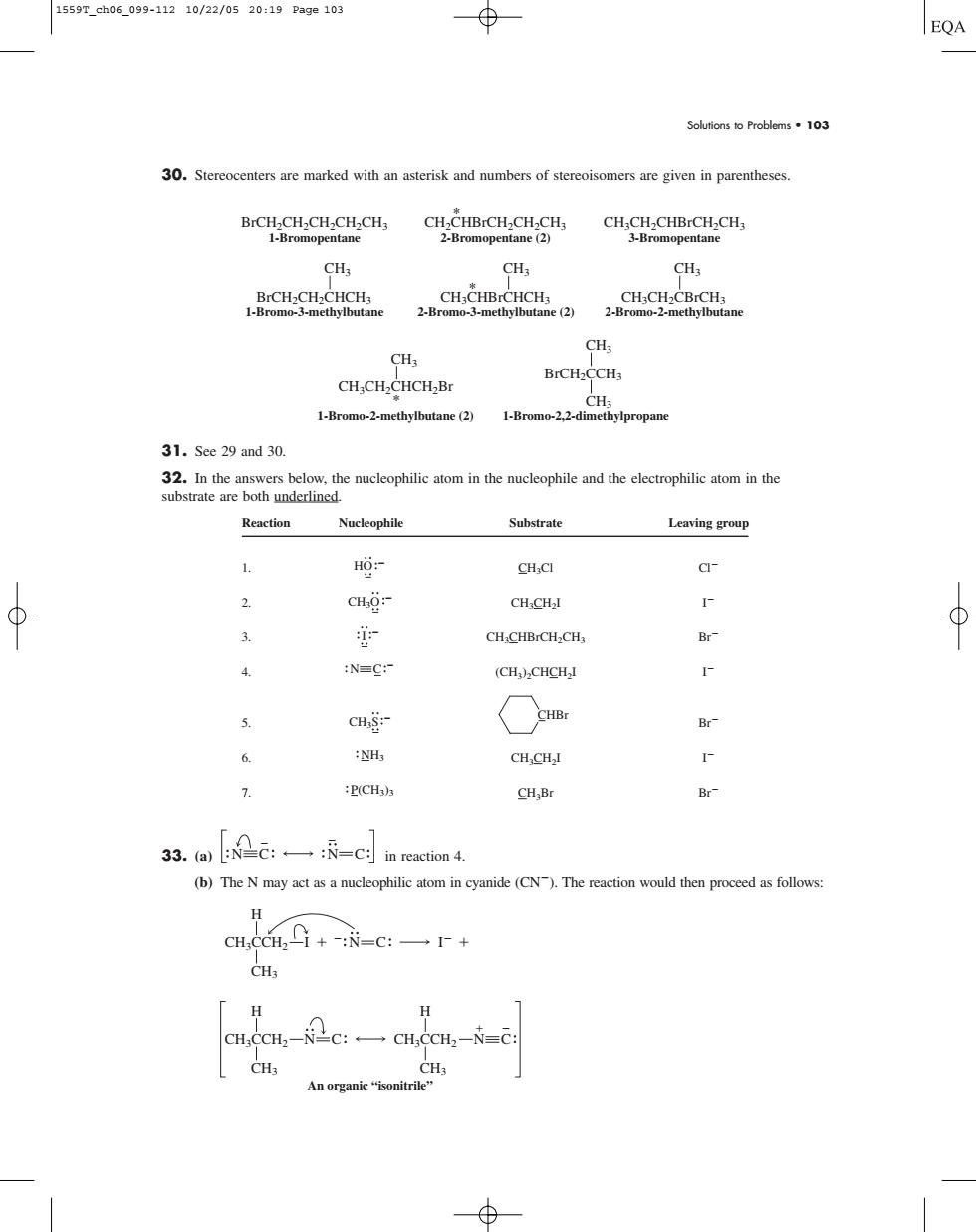正在加载图片...

15597ch06099-11210/22/0520:19Pag0103 EQA Solutions o Problems103 30.Stereocenters are marked with an asterisk and numbers of stereoisomers are given in parentheses. BrCH2CH-CH-CH2CH3 1-Bromopentane CH, CH3 CH; BrCH2CCH3 CH;CH:CHCHaBr 1-Bromo-2-methylbutane (2) mpopane 31.See 29 and 30. hhe nucleophilie atom in the nucleophile and the cletophilie tom in the Reaction Nucleophile Substrate Leaving group 1. HO:- CH.CI CHO: CHCHaI CH-CHBrCH-CH Br- :N=C: (CH.)CHCH,l CHS:- HB. r :P(CH) CH,Br Br 3.ab2c:一-C i tio4 (b)The N may act atom in cyanide (CN-).The reaction would then proceed as follows cH,dS+i=c:一r+ CH3 [H H,dcH,-2c:一 H2-N=C CH. An organic"isonitrileSolutions to Problems • 103 30. Stereocenters are marked with an asterisk and numbers of stereoisomers are given in parentheses. 31. See 29 and 30. 32. In the answers below, the nucleophilic atom in the nucleophile and the electrophilic atom in the substrate are both underlined. Reaction Nucleophile Substrate Leaving group 1. CH3Cl Cl 2. CH3CH2I I 3. CH3CHBrCH2CH3 Br 4. (CH3)2CHCH2I I 5. Br 6. CH3CH2I I 7. CH3Br Br 33. (a) in reaction 4. (b) The N may act as a nucleophilic atom in cyanide (CN). The reaction would then proceed as follows: CH3CCH2 N C H I I CH3 CH3CCH2 N C H CH3 CH3CCH2 H CH3 An organic “isonitrile” N C N C N C P(CH3)3 NH3 CHBr CH3S N C I CH3O HO BrCH2CH2CH2CH2CH3 1-Bromopentane CH2CHBrCH2CH2CH3 2-Bromopentane (2) CH3CH2CHBrCH2CH3 3-Bromopentane * BrCH2CH2CHCH3 1-Bromo-3-methylbutane * CH3 CH3CHBrCHCH3 2-Bromo-3-methylbutane (2) CH3 CH3CH2CBrCH3 2-Bromo-2-methylbutane CH3 * CH3CH2CHCH2Br 1-Bromo-2-methylbutane (2) CH3 BrCH2CCH3 1-Bromo-2,2-dimethylpropane CH3 CH3 1559T_ch06_099-112 10/22/05 20:19 Page 103���������������������